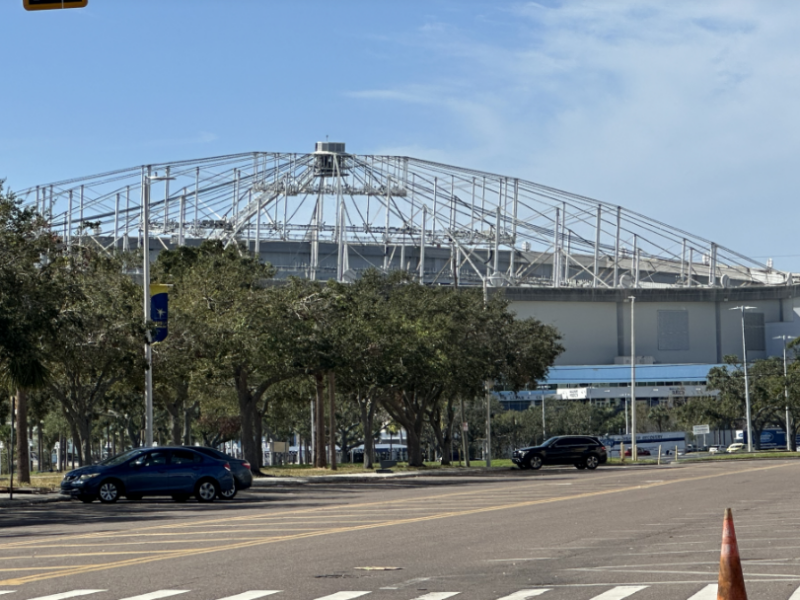Many commuters coming to campus drive over the Sunshine Skyway or the Howard Frankland bridges. Each is lined with light posts that dually function as perches for hundreds of birds that call the coastal areas in Tampa Bay home.
The birds along these stretches are seemingly unaffected by the busy highway, gliding close to cars going by.
“Seabirds do something called wind shear flying,” said Lee Snyder, adjunct professor of biology.
Wind shear is the difference in wind speed and direction over a short distance.
“The wind is affected by the bridge, usually creating an updraft,” Snyder said. “That’s why you see pelicans flying within inches of the bridge.”
Three of the most common birds seen along the bridges are the Double-Crested Cormorant, the Brown Pelican and the Osprey.
With its bizarre appearance and splayed wing stance, the Cormorant is easy to spot. It’s commonly mistaken for a duck because of the similarity in head shape and large webbed feet. Unlike a duck, the Cormorant is slimmer with a snakelike neck.
The Cormorant’s showy pose, wings splayed in the sun, is for drying. Their feathers aren’t waterproof, making it a feathered submarine hunting for fish.
Florida becomes a temporary home for many types of Pelicans in the winter, but the Pelican that calls the sunshine state home is the Brown Pelican. Pelicans are frequently found on piers resting or waiting for handouts. Pelicans drop into the water like dive bombers, able to see a meal swimming 60 or 70 feet over the water.
The Osprey is a skilled assassin, diving into the water feet first to pull prey from just beneath the surface. Taking advantage of the coastal wind currents, Ospreys will hover before diving. Feet with spiked pads and sharp talons for shredding grip slippery fish that are lifted out of the water head first to be as aerodynamic as possible.
Perhaps while driving to or from class, you’ll look up and spot one of these birds while still managing to not spill coffee in your lap.


